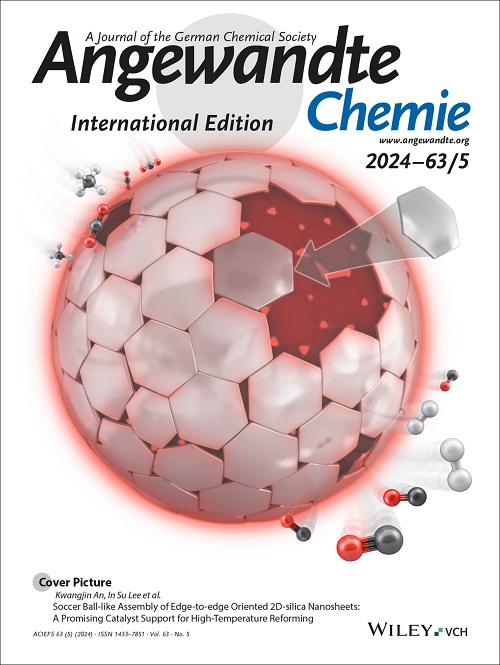Pyrrolizwilline, a unique bacterial alkaloid assembled by a nonribosomal peptide synthetase and non-enzymatic dimerization
IF 16.1
1区 化学
Q1 CHEMISTRY, MULTIDISCIPLINARY
引用次数: 0
Abstract
Pyrrolizidine alkaloids (PAs) are a structurally diverse group of heterocyclic specialized metabolites characterized by a core structure comprising a hexahydro-1H-pyrrolizine. PAs are synthesized through two main pathways. In plants, assembly occurs via a homospermidine synthase, and in bacteria, through combined action of a nonribosomal peptide synthetase and a Baeyer-Villiger monooxygenase. While the toxic properties of plant-derived PAs and their prevalence in animal and human foods have been extensively studied, the biological roles and biosynthesis of more complex bacterial PAs are not well understood. Here, we report the identification and characterization of a bacterial biosynthetic gene cluster from Xenorhabdus hominickii, xhpA-G, which is responsible for producing the PA pseudo-dimer pyrrolizwilline. Analysis of X. hominickii promoter exchange mutants together with heterologous expression of xhpA-G in E. coli, revealed a set of pathway intermediates, two of which were chemically synthesized, as well as multiple derivatives. This information was leveraged to propose a detailed biosynthetic pathway to pyrrolizwilline. Furthermore, we have characterized the hydrolase XhpG, the key enzyme in the conversion of the pathway intermediate pyrrolizixenamide to pyrrolizwilline, using X-ray crystallography and small-angle X-ray scattering (SAXS).Pyrrolizwilline,一种由非核糖体肽合成酶和非酶二聚化作用合成的独特细菌生物碱
吡咯烷生物碱(PAs)是一类结构多样的杂环类专一代谢物,其特点是核心结构包括一个六氢-1H-吡咯烷。PA 主要通过两种途径合成。在植物中,PA 是通过高丝氨酸合成酶组装的,而在细菌中,则是通过非核糖体肽合成酶和拜尔-维利格单氧化酶的联合作用组装的。虽然对植物源 PA 的毒性特性及其在动物和人类食品中的普遍存在进行了广泛研究,但对更复杂的细菌 PA 的生物作用和生物合成还不甚了解。在此,我们报告了来自 Xenorhabdus hominickii 的细菌生物合成基因簇 xhpA-G 的鉴定和特征描述,该基因簇负责生产 PA 伪二聚体 pyrrolizwilline。通过分析 X. hominickii 启动子交换突变体以及 xhpA-G 在大肠杆菌中的异源表达,发现了一系列途径中间体,其中两个是化学合成的,还有多种衍生物。利用这些信息,我们提出了吡咯烷酮的详细生物合成途径。此外,我们还利用 X 射线晶体学和小角 X 射线散射(SAXS)对水解酶 XhpG 进行了表征,该酶是将途径中间体 pyrrolizixenamide 转化为 pyrrolizwilline 的关键酶。
本文章由计算机程序翻译,如有差异,请以英文原文为准。
求助全文
约1分钟内获得全文
求助全文
来源期刊
CiteScore
26.60
自引率
6.60%
发文量
3549
审稿时长
1.5 months
期刊介绍:
Angewandte Chemie, a journal of the German Chemical Society (GDCh), maintains a leading position among scholarly journals in general chemistry with an impressive Impact Factor of 16.6 (2022 Journal Citation Reports, Clarivate, 2023). Published weekly in a reader-friendly format, it features new articles almost every day. Established in 1887, Angewandte Chemie is a prominent chemistry journal, offering a dynamic blend of Review-type articles, Highlights, Communications, and Research Articles on a weekly basis, making it unique in the field.

 求助内容:
求助内容: 应助结果提醒方式:
应助结果提醒方式:


